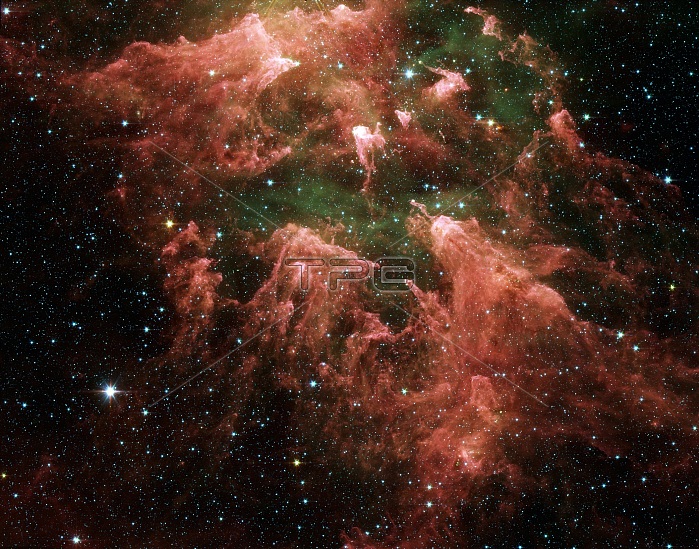
This false-color image taken by NASA's Spitzer Space Telescope shows the 'South Pillar' region of the star-forming region called the Carina Nebula. Though the nebula's most famous and massive star, Eta Carinae, is too bright to be observed by infrared telescopes, the downward-streaming rays hint at its presence above the picture frame. Ultraviolet radiation and stellar winds from Eta Carinae and its siblings have shredded the cloud to pieces, leaving a mess of tendrils and pillars. This shredding process triggered the birth of the new stars uncovered by Spitzer. This image was taken by the infrared array camera on Spitzer. It is a three-color composite of invisible light, showing emissions from wavelengths of 3.6 microns (blue), 4.5 microns (green), 5.8 microns (orange), and 8.0 microns (red). Photo via Newscom
| px | px | dpi | = | cm | x | cm | = | MB |
Details
Creative#:
TOP21767379
Source:
達志影像
Authorization Type:
RM
Release Information:
須由TPG 完整授權
Model Release:
No
Property Release:
No
Right to Privacy:
No
Same folder images:
Restriction:
商業用途須申請

 Loading
Loading